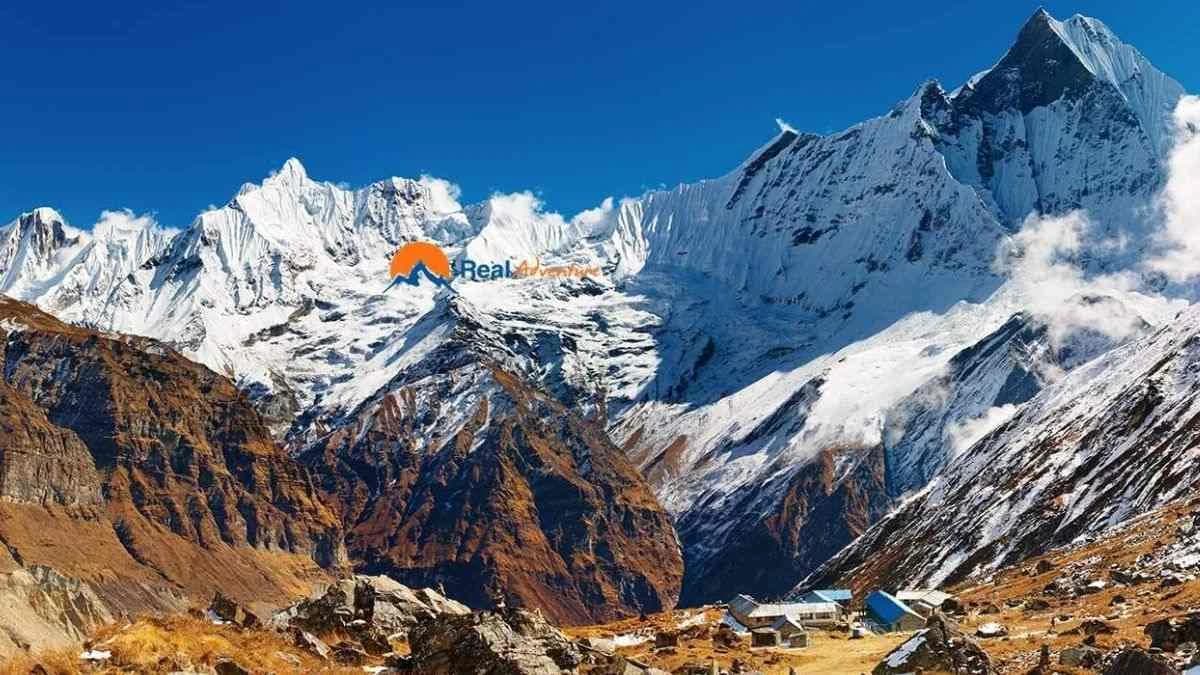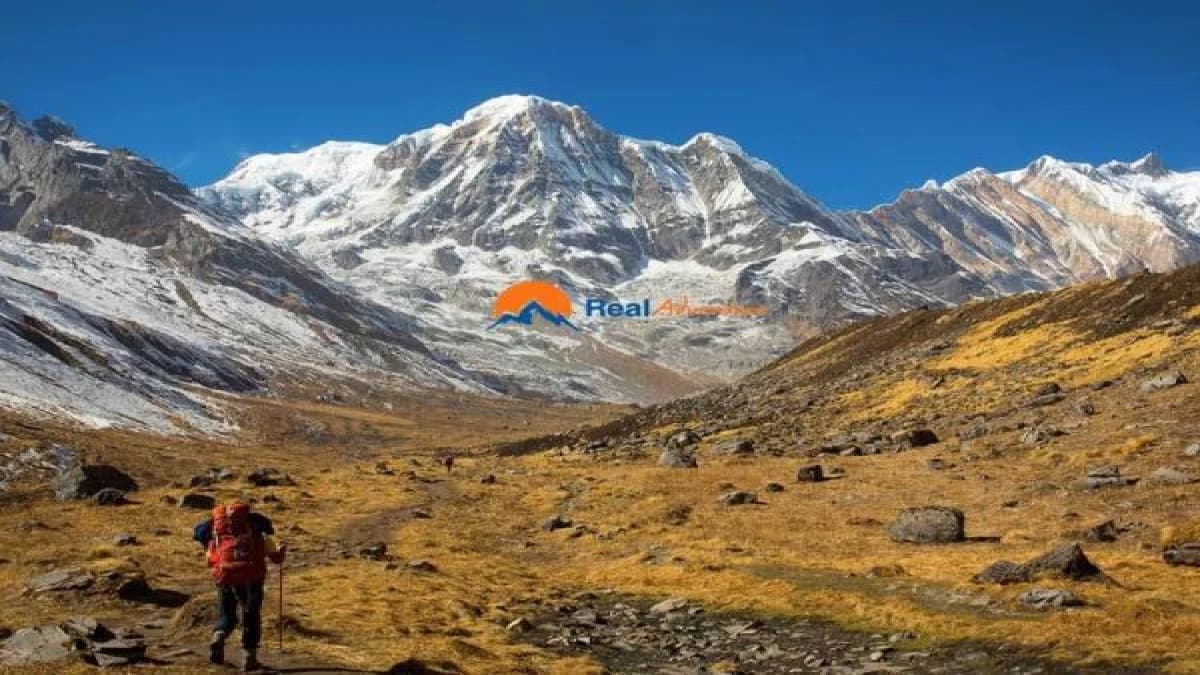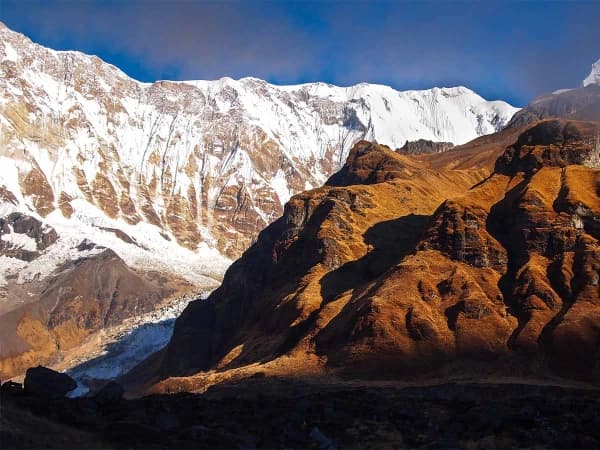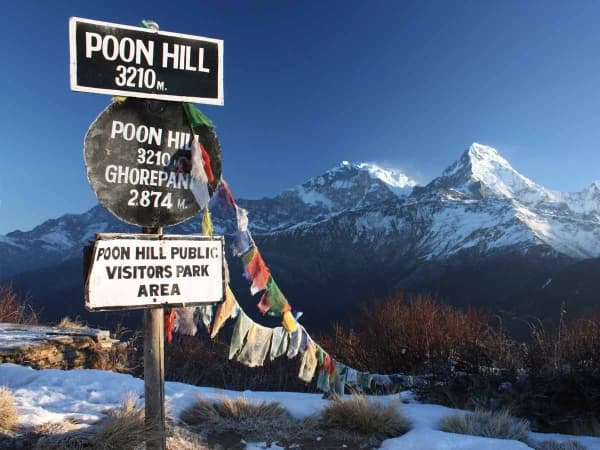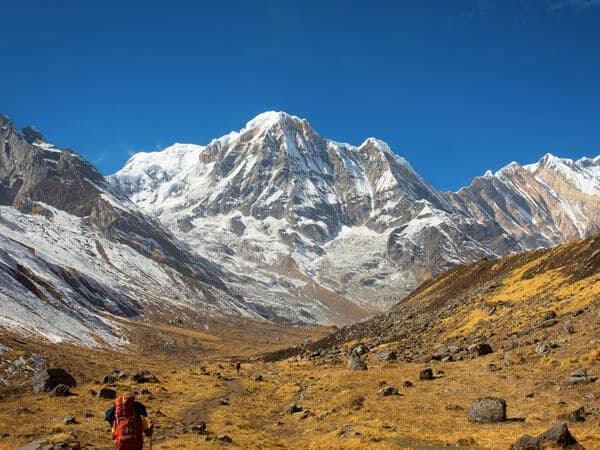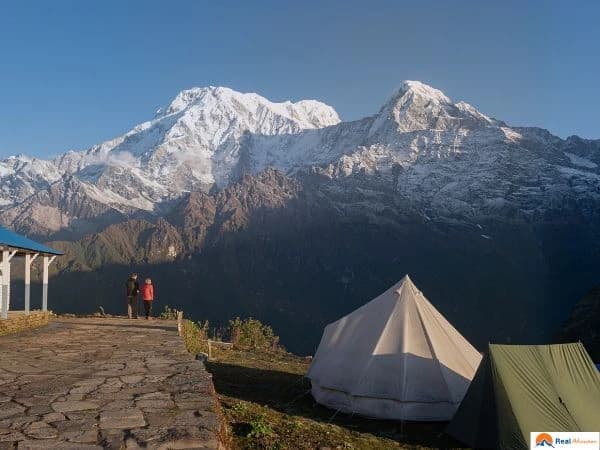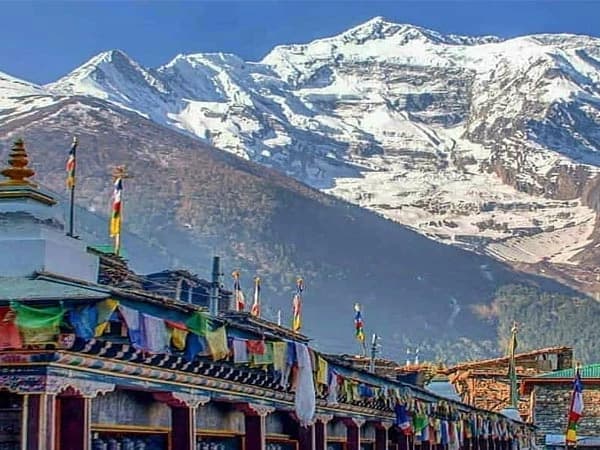14 Days Annapurna Base Camp and Ghorepani Poon Hill Comfort Trek in Nepal
The Annapurna Base Camp trek is one of the most famous and popular trekking routes of Nepal. This trek alone attracts thousands of tourists every year. The trek is known for its beautiful mountain views, local cultures and landscapes. This trek is best fit for seasoned trekkers and nature lovers. This classic trek offers you an unforgettable experience in the heart of the Annapurna region Trek.
You start your trek at a place called Nayapul which is a 1 hour drive from Pokhara. The trails take you through mesmerizing views of terraced fields, lush forests and local fauna. In the early parts of the trek you will pass through Tikhedhunga where rivers and lush hills show you about the adventure that is yet to come. As you slowly ascend you reach Ghorepani which is a famous village known for its traditions and views of the Annapurna and Dhaulagiri mountain ranges.
One of the best highlights of the trek is the mountain sunrise hike to Poon Hill. The Poon Hill stands at an altitude of 3210 meters. This is an iconic viewpoint that offers you a 360 view of the mountains. During sunrise the Annapurna South, Hunchuli and Dhaulagiri are blasted with golden lights from the sunrise making it a view that stays in the trekkers heart forever.
The trail then continues through rhododendron forests and scenic views. Rhododendron is the national flower of Nepal making this adventure even more personal. On your trek you will encounter scenic ridgelines to Tadapani and Chhomrong where you will get to experience the local Gurung culture. As you will trek deeper into the Annapurna region the land starts to get more rough and harsh. Slowly as you move on you will get to see the towering presence of the Machapuchare (Fishtail Peak) mountain and the Annapurna I mountain which stands at 8,091 meters.
Finally arriving at the Annapurna Base Camp (4130) meters is a powerful moment. The place is surrounded by a natural cold breeze by the Himalayas. Seeing this will give you a sense of awe and accomplishment. It's not just the altitude that takes your breath away but the sheer beauty and silence of the high mountains.
Although you may feel sad descending from such a beautiful place, the descent isn't any less beautiful. Along the way a place called Jhinu Danda offers you the perfect chance to relax in its famous natural hot springs. Soaking your tired muscles in the warm waters while overlooking the landscapes will beat anything that you have ever experienced
This Annapurna Base Camp with Poon Hill trekking package also offers a rich cultural experience. You will be able to interact with the warm hearted Gurung and Magar people. You can enjoy their local cuisine and stay in cozy teahouses that reflect the hospitality of the Himalayas. Whether you begin your trip from Kathmandu or from Pokhara the trek will be well organized, this journey is suitable for trekkers with moderate fitness and slight experience. With proper acclimatization and expert guides this will be a deeply rewarding and pleasant journey.
The 14 Days Annapurna Base Camp Trek is more than just a hikeit's a life-changing Himalayan journey. Blending natural grandeur, cultural depth, and physical challenge, this trek is a must-do for anyone seeking a true Nepalese mountain experience. Whether you call it the Annapurna base camp trek package or the ABC Trek, one thing is certain: it’s a trek that will stay with you forever.
Note: You will have choise of treks in Annapurna Region, If you want to only Annapurna Base Camp Trek then you complete in 11 Days, if you want to skip the Annapurna Base Camp Trek then you can trek Ghorepani Poon Hill Trekin 6 Days or if you want to trek in Everest Region then you can do Everest Base Camp Trek in 12 to 14 Days.
Highlights of Annapurna Base Camp Trek - 14 Days
-
Scenic Beauty at Nayapul: The trek begins from Nayapul, a charming village surrounded by lush green hills, terraced fields, and flowing rivers, offering a scenic start to your adventure.
-
Charming Village of Tikhedhunga: A tranquil stop featuring stone-paved trails, beautiful waterfalls, and traditional houses that provide a glimpse into rural Nepali life.
-
Panoramic Views from Poon Hill: Witness the breathtaking sunrise over the Annapurna and Dhaulagiri ranges from Poon Hill, one of Nepal’s most renowned viewpoints. The golden glow on snow-capped peaks is unforgettable.
-
Cultural Immersion at Ghorepani: Explore the vibrant culture and traditions of the Gurung and Magar communities, complemented by stunning Himalayan backdrops.
-
Forest Trails to Tadapani: Trek through dense rhododendron and oak forests alive with colorful flora and occasional sightings of exotic birds and wildlife.
-
Traditional Hospitality at Chhomrong: Experience the warm hospitality of the Gurung people in Chhomrong, a gateway to Annapurna Sanctuary, offering mesmerizing views of Machapuchare (Fishtail Mountain).
-
Reaching Annapurna Base Camp: The ultimate highlight is standing at Annapurna Base Camp (4,130m), surrounded by towering peaks like Annapurna I, Machapuchare, and Hiunchuli, forming a natural amphitheater.
-
Natural Hot Springs at Jhinu Danda: Relax and rejuvenate in the natural hot springs at Jhinu Danda, a perfect way to soothe your muscles after the trek.
-
Diverse Landscapes: Traverse through terraced farmlands, alpine meadows, bamboo forests, and rugged Himalayan terrains, witnessing ever-changing landscapes.
-
Cultural and Culinary Experiences: Enjoy authentic Nepali cuisine and traditional teahouse stays while learning about the rich heritage and lifestyle of local mountain communities.



